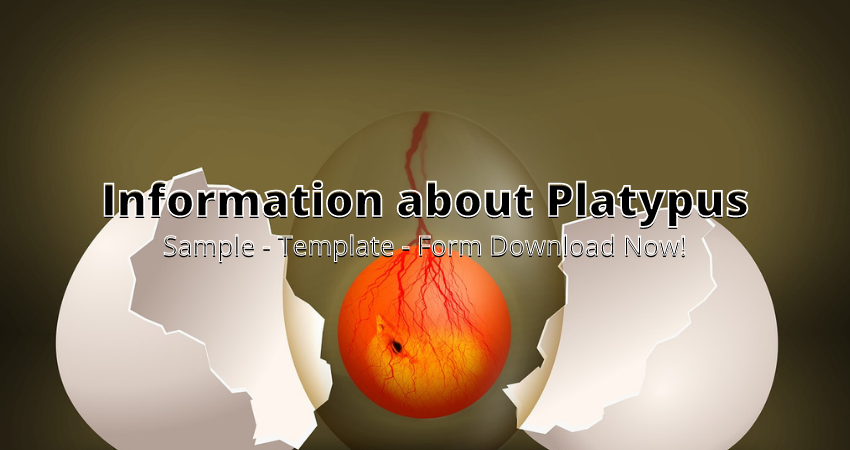Information About Platypus ⏬👇
Platypus are one of the most unique animals on earth. Find out about everything from their life cycle and habitat to local names for this creature that lives in Australia. Platypus are strange, mammal-like creatures that look like they’re part bird, part reptile and part mammal. They can be found in eastern Australia and Tasmania, where they spend most of the time in rivers and streams, hunting for food.
Platypus are a monotreme, meaning that they lay eggs. The platypus gestation period lasts for about three months, so to give birth to very young platypus is a difficult task for their mother. The most common thing you will notice about the platypus are its eyes and bill. They have very large eyes that protrude from the head on stalks and have no eyelids. They have no ears, but instead have a tiny patch of sensory hairs just inside each eye that can detect movement and vibrations on the surface of the water when they dive down for food. The bill is also odd in appearance; it’s long and flat with tiny holes at the end.
What kind of animal is it?
The platypus is a semi-aquatic, egg-laying mammal endemic to eastern Australia, including Tasmania. It is the only surviving member of its family (Ornithorhynchidae) and genus (Ornithorhynchus), although a number of related species have been found in the fossil record. The seal toothed platypus has an average body length of 55 cm (22 in) and weighs about 1.4 kg (3 lb).The fur is dense and soft but not woolly like that of mammals belonging to the same order as it, such as the echidna, which also has spurs on its hind feet. The coloration of both fur and skin is dark, brownish gray and all parts of this terrestrial mammal are covered with thick white peritrichous fur. The platypus uses eyesight and electroreception to detect prey; this combination differentiates them from most other mammals, which rely on one sense other than electroreception for hunting. Although they are not unique in this regard (see Hammerheads), in contrast to most other aquatic mammals they have little use for vision.
The platypus is one of the few mammals that are monotremes, meaning they lay eggs yet have body hair instead of fur. Platypuses have a broad tail and webbed feet that allow them to swim in water. They can remain underwater for 10 minutes at a time while hunting for food or resting. Platypuses are solitary animals, with only rarely coming together during breeding season from October to January. During this time, males build burrows up to 4 feet long and dig shallow depressions near them for females to lay their eggs in. Following mating, a female will lay between 2 and 9 eggs, but the majority of these will be destroyed by predators before hatching. Some unusual features about platypuses include: no teeth, a very small bill-like snout with nostrils on top, three small claws on each foot (instead of four), males’ 7-inch tail length -don’t forget your clip-on
Email Bülteni
Yeni yazılarımızdan hemen haberdar olmak için kayıt olun.







